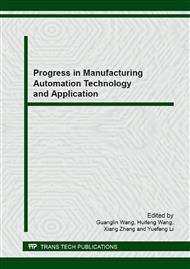p.16
p.21
p.25
p.30
p.35
p.41
p.46
p.52
p.56
The Annealing Effects on the Formability of T2 Copper Foil in Micro Deep Drawing Process by Laser Driven Flyer
Abstract:
In this paper, cold-rolled T2 copper foils with the thickness of 50 were chosen. The foils were annealed at different temperatures, namely, 250°C, 350°C, 450°C, 550°C, respectively. Micro deep drawing experiments on cold-rolled foils and annealed foils by laser driven flyer were achieved in order to investigate annealing effects on the formability of T2 copper foil. The forming depth and material flow uniformity of the workpiece at different conditions were compared and analyzed. The test results showed that: (1) The workpiece of cold rolled foil indicates poor neutral, non-uniform material flow, smaller forming depth, it is due to that the microstructures of cold-rolled foil are fiber organizations, which leads to poor plastic deformation capacity.(2)Annealing can significantly improve the formability of the foil. In the first stage : 250-350°C, recovery and recrystallization occurred in succession in the organization of the raw material, fibrous tissue transformed into equiaxed grains, the residual stress is greatly reduced, thus, the plastic deformation capacity is recovered. The forming depth is also significantly improved, increasing by about twice. In the second stage: 350-450°C, the enhanced formability is relative to the surface layer effect, which is also a reflection of micro-scale effect. This study provided a theoretical and experimental guidance for the practical application of micro deep drawing process by laser driven flyer.
Info:
Periodical:
Pages:
35-40
Citation:
Online since:
September 2013
Authors:
Keywords:
Price:
Сopyright:
© 2014 Trans Tech Publications Ltd. All Rights Reserved
Share:
Citation:


